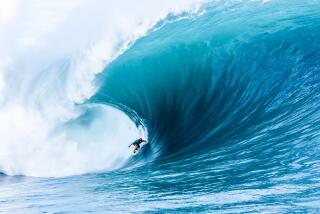Research Gives Future Ships Help Against Giant Waves
BALTIMORE — Owen M. Phillips is searching for a way to help ship captains navigate safely through, or around, the awesome destructive force of giant ocean waves.
Phillips, a Johns Hopkins University researcher, and former graduate student, Daifang Gu, who now teaches at Princeton University, have studied data from the larger waves created during Atlantic Ocean storms. They found that the shape of a given storm’s largest waves could be predicted by measuring the shape of the storm’s smaller waves and plugging the numbers into a statistical formula.
Phillips says he has also found at least four shapes that larger waves can take: Roughly speaking, they can be described as a long wall, a short wall, a “bumpy” wave created by cross-currents and, the rarest of all, waves like volcano cones.
Phillips, who plans to publish his findings in the Journal of Physical Oceanography early next year, isn’t sure how many giant wave shapes he’s likely to find. “We’ve found four very different shapes in the four storms we’ve analyzed,” he said.
The shape of a giant wave can make a big difference to a ship caught in one. “The most dangerous ones are not the ones with the highest crests, but those with the deepest troughs,” Phillips said. “If you hit a high crest, it may roll across your deck and do some damage. But mostly it will wash over and you’ll be OK.
“If you hit a deep trough, then the water sort of drops away from the bow, you go nose down,” he said. “Then you hit the wall of water on the other side, and your ship becomes a kind of submarine. It has to rise up through the water, and that can be fatal.”
“If you know the shape of giant waves, then in the ship design, you ask what is the maximum slope that you will encounter,” said Norden E. Huang of NASA’s Goddard Space Flight Center in Greenbelt, the architect of the wave experiment. “Then you design for that kind of encounter.”






